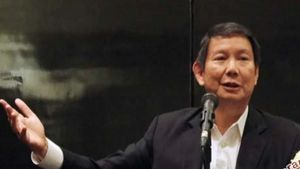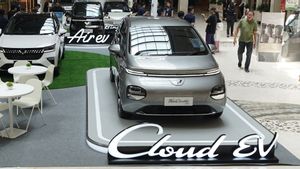JAKARTA - NASA's James Webb Space Telescope has entered the scheduled commissioning phase, which will take up to the next five months.
The Webb telescope a few days ago had arrived at its destination at Lagrange Point 2 (L2) Earth-Sun, which is about 930,000 miles (1.5 million kilometers) from the planet.
After arriving at its destination, the Webb Telescope will still enter several stages before it will actually observe the universe.
Lead investigators from the Webb Telescope science team outlined their plans recently online by the Space Telescope Science Institute (STScI) in Baltimore.
According to the plan, this week, will be an important milestone for powering the telescope's science instruments. The Webb Telescope team is also continuing to align the mirrors and prepare the telescope through another five months of commissioning.
Jonathan Gardner, Webb's Deputy Senior Project Scientist at NASA's Goddard Space Flight Center in Greenbelt, Maryland, gives a brief explanation of what the Webb Telescope has been through over the past few months, and how things have happened in orbit with the telescope.
"There were 50 major deployments, all of them worked," Gardner said. Take, for example, the opening of the telescope mirror, as an example of the main milestone achieved by the Webb Telescope.
Gardner also describes the occurrence of the Webb Telescope's brightness, which changes frequently in six-hour cycles, and repeats itself as the observatory's solar array reflects flashes of sunlight back to Earth, during its regular rotation.
"Sunshields reflect sunlight directly onto Earth, and (sometimes) have a shimmer and other times, the light is more diffuse," Gardner said.
In addition to completing the commissioning phase, this will also include an assessment of the optical performance of the telescope.

"We're going to be aligning the telescope, that's about a three-month process that we plan to start early next week," said Mike McElwain, Webb Observatory Project Scientist at Goddard.
"The optical performance of the telescope will also be assessed to (among other things) determine the amount of stray light produced by the optics," he added.
The commissioning phase of the optics will include several complex steps, sometimes sequential and sometimes iterative, such as image identification, aligning the different mirror segments, and finally precoating the segments into fractions of wavelengths.
To guide the alignment of the mirrors, the Webb Telescope team will focus each of the 18 main mirror segments on a bright and distant star called HD 84406, which is part of the constellation Ursa Major or nicknamed the Great Bear.
McElwain noted that the telescope's performance will change as it continues to cool. Eventually the Webb Telescope's operating temperature will be around 45 Kelvin or degrees above absolute zero, which equals minus 379 degrees Fahrenheit, but commissioning is ongoing as the telescope changes temperatures.
The telescope will also levitate very little over time as well, due to the heating of the Sun. While disturbances to this telescope are expected to be very small, scientists will periodically make adjustments as needed.
The Webb Telescope team is now preparing to transition to operations science through instrument commissioning. Commissioning indicates that the instrument can be calibrated, but calibration will not be completed during the commissioning period.
Full calibration will wait until Cycle 1, the first round of early science, which is expected to take place after the mission's six-month mark, around June 25. This means the instrument will be fully ready to operate in the middle of data collection.
Around the same time will come the initial release of observations, including the first images. Later, there will be a set of images that will become public consumption, including the media.
Then, Cycle 2 for operational science will likely enter in January 2023, assuming the schedule continues as planned. The exact date of submission of the proposal will be determined as a result of commissioning. This is quoted from Space, Monday, January 31.
The English, Chinese, Japanese, Arabic, and French versions are automatically generated by the AI. So there may still be inaccuracies in translating, please always see Indonesian as our main language. (system supported by DigitalSiber.id)













